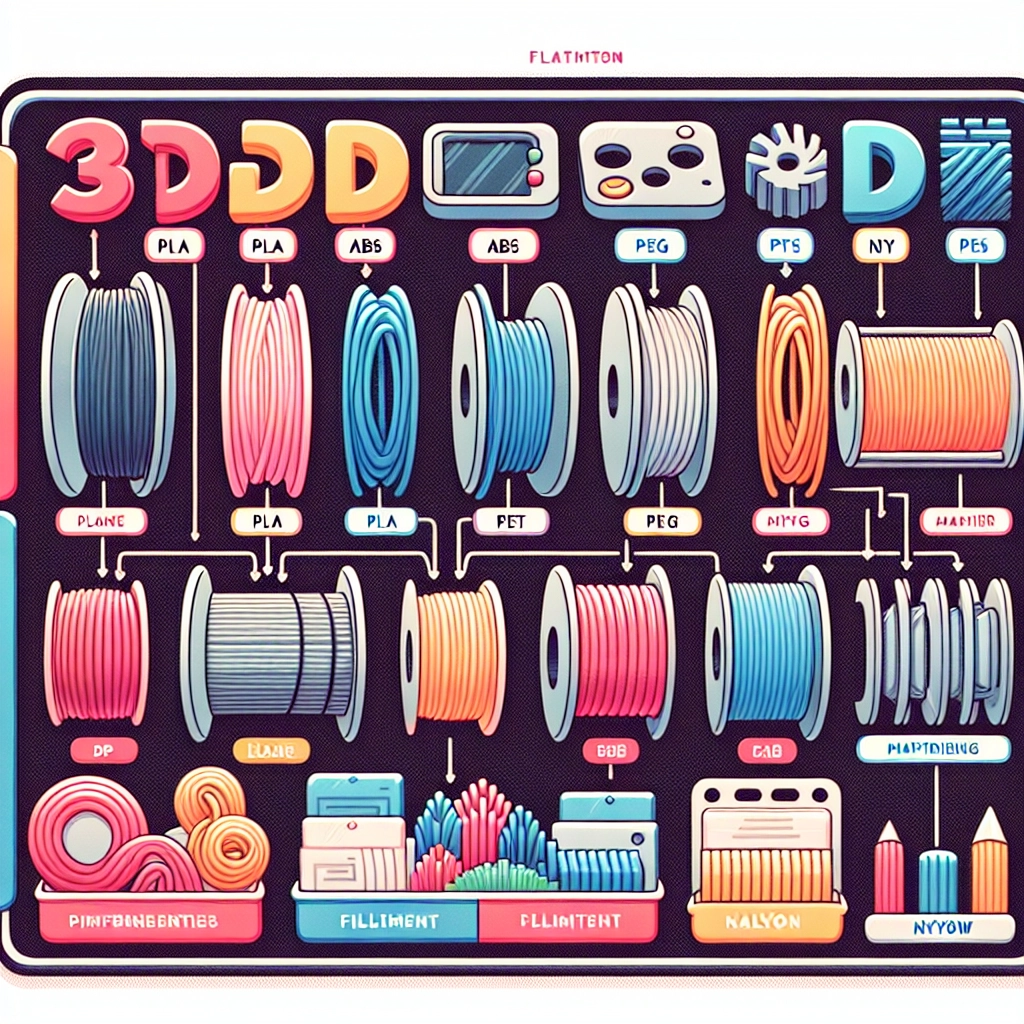3D Filaments 101: A Beginner’s Guide to Materials and Their Properties
3D printing has revolutionized the way we create objects, allowing for rapid prototyping, custom designs, and cost-efficient production. One of the most critical aspects of 3D printing is the choice of materials, commonly referred to as filaments. With so many options available, it can be daunting for beginners to navigate this landscape. In this guide, we will explore the different types of 3D filaments, their properties, and the suitability of each for various applications.
Understanding 3D Filaments
3D filaments are the materials used in Fused Deposition Modeling (FDM) printers, which are the most common type of 3D printers. These filaments come in spools and are typically made from thermoplastics that are heated and extruded to build up layers of material, forming a 3D object. The choice of filament significantly impacts the strength, flexibility, and overall quality of the printed model.
Common Types of 3D Filaments
1. PLA (Polylactic Acid)
PLA is one of the most popular and beginner-friendly filaments available. Made from renewable resources like corn starch or sugarcane, it’s biodegradable and environmentally friendly.
Properties:
- Ease of Use: Very forgiving and adheres well to the print bed.
- Strength: Moderate strength and rigidity.
- Temperature Resistance: Low; starts to deform around 60°C (140°F).
- Finish: Has a glossy finish, making it great for detailed prints.
Best Uses: Ideal for prototypes, decorative items, and education projects.
2. ABS (Acrylonitrile Butadiene Styrene)
ABS is widely used in industrial applications and is known for its toughness and impact-resistance. It’s the material often used for making LEGO bricks.
Properties:
- Durability: Stronger and more impact-resistant than PLA.
- Temperature Resistance: Better than PLA; can withstand higher temperatures (around 100°C or 212°F).
- Printability: Requires a heated bed to minimize warping and cracking.
Best Uses: Excellent for functional parts, automotive components, and items that require durability.
3. PETG (Polyethylene Terephthalate Glycol-Modified)
PETG combines the best features of PLA and ABS. It’s easy to print like PLA while providing the strength and durability of ABS.
Properties:
- Chemical Resistance: Highly resistant to moisture and chemicals.
- Flexibility: More flexible than PLA but stiffer than ABS.
- Ease of Printing: Does not warp as easily as ABS and can often be printed without a heated bed.
Best Uses: Suitable for mechanical components, food containers, and outdoor applications.
4. TPU (Thermoplastic Polyurethane)
TPU is a flexible filament known for its rubber-like properties. It’s ideal for printing items that need to bend and stretch.
Properties:
- Flexibility: Highly elastic and durable.
- Adhesion: Can be tricky to print with requires careful adjustments in settings.
- Wear Resistance: Excellent for items that undergo frequent flexing.
Best Uses: Perfect for phone cases, wearable items, and other flexible products.
5. Nylon
Nylon is a versatile filament that offers excellent strength and durability. It is a bit more challenging to work with but yields very professional results.
Properties:
- Strength: Exceptional tensile strength and impact resistance.
- Flexibility: Offers some elongation before breaking.
- Moisture Sensitivity: Absorbs moisture from the air, which can affect print quality.
Best Uses: Ideal for producing mechanical parts, gears, and functional prototypes.
Choosing the Right Filament for Your Project
When selecting a filament, consider the following factors:
- Printability: How easily can the filament be printed with your specific printer?
- Strength Requirements: Does the finished object need to withstand stress or impact?
- Temperature Exposure: Will the object be subjected to heat?
- Aesthetic Qualities: Consider the finish and color options available for your chosen material.
Conclusion
Understanding the various types of 3D filaments and their properties is crucial for successful 3D printing projects. Whether you are a hobbyist, a professional designer, or a novice exploring the world of additive manufacturing, knowing which filament to use based on your project’s requirements can make all the difference. With this beginner’s guide, you’re now equipped to embark on your 3D printing journey with confidence. Happy printing!

